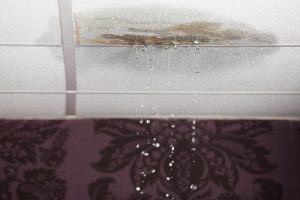Hidden leaks are a major problem for many homes, which is why we encourage homeowners to regularly schedule water leak detection with professionals, even if they don’t have a specific reason to suspect leaks. While there are DIY methods for detecting leaks, they lack the precision and reliability of professional techniques. Only professionals can provide an accurate diagnosis, minimize damge, and comprehensive solutions.
If you’re curious about how professionals do this job, we’ll explain several of the most common below.
Techniques and Tools Used by Professionals
Professional plumbers employ various techniques and tools to locate hidden leaks, each tailored to the specific situation:
Acoustic Leak Detection
Acoustic leak detection involves using specialized listening devices to detect the sound of water escaping from pipes. This method is effective for locating leaks within walls, floors, and underground. The process involves:
- Listening Devices: These devices amplify the sound of leaks, allowing plumbers to pinpoint the exact location of the problem.
- Correlators: Advanced correlators can analyze sound patterns from different points along the pipe to determine the precise leak location.
Thermal Imaging
Thermal imaging cameras detect temperature differences caused by water leaks. This non-invasive method is particularly useful for identifying leaks in walls, ceilings, and floors. The process involves:
- Infrared Cameras: These cameras capture thermal images that highlight temperature variations, revealing hidden moisture and leaks.
- Analysis: Plumbers analyze the thermal images to locate the source of the leak accurately.
Moisture Meters
Moisture meters measure the moisture levels in building materials, helping to identify areas affected by hidden leaks. This method is beneficial for detecting leaks behind walls and under floors. The process involves:
- Pin-Type Meters: These meters use electrodes to measure moisture content in materials like wood and drywall.
- Pinless Meters: These meters use electromagnetic signals to detect moisture without damaging surfaces.
Video Inspection
Video inspection involves using a small, flexible camera attached to a cable to visually inspect the interior of pipes and plumbing systems. This method is particularly useful for locating leaks in hard-to-reach areas. The process involves:
- Inspection Cameras: These cameras provide real-time video footage of the pipe’s interior, allowing plumbers to identify leaks and other issues.
- Remote Access: The camera’s flexibility allows it to navigate through complex plumbing systems, providing a comprehensive view.
Dye Testing
Dye testing involves introducing a safe, non-toxic dye into the plumbing system to trace the path of the leak. This method is useful for detecting leaks in specific areas such as toilets and drains. The process involves:
- Dye Introduction: The dye is added to the system and monitored for any signs of leakage.
- Visual Inspection: Plumbers visually inspect the area for traces of dye, indicating the leak’s location.
Contact Us for Professional Leak Detection
At HM Plumbing, we’re committed to protecting your home from the dangers of hidden leaks. Our team of experienced plumbers use advanced tools and techniques for leak detection in Sandy Springs, ensuring your home remains safe and dry. If you suspect a hidden leak in your home, don’t hesitate to contact us for professional leak detection and repair services.
Contact HM Plumbing today for your residential plumbing needs. Serving with Integrity.

